|
In 512 BC or thereabouts, the venerable Chinese general, Sun Tzu wrote The Art of War in which he proffered the following advice on military strategy: The highest form of generalship is to balk the enemy’s plans…the next best is to attack the enemy’s army in the field; and the worst policy of all is to besiege walled cities. Sun Tzu’s advice applies equally well in business, as disruptive new ventures are well advised not to initiate an all out war aimed at taking over incumbent market leaders’ core markets– their “walled cities.” Sebastian Thrun, the self-declared father of the modern movement to disrupt higher education with Massive Open Online Courses — aka MOOCs — has learned this lesson well. And therein lies an instructive tale. For those unfamiliar with this space, prior to 2011, Thrun was a tenured professor at Stanford University who taught one of the most popular computer science courses on campus, routinely packing his lecture hall with 200 students. But after hearing Salman Khan’s inspiring TED talk in March, 2011, Thrun reckoned that he could reach a far larger global audience by transforming his course to video format. He set out to convert his popular Stanford course to online delivery which initially featured videos produced with nothing more than a camera, a pen, and a napkin. Despite the low initial production quality, many of his 200 Stanford students chose to switch to his video version because they could absorb the material at their own pace and on their own schedule. Eventually, the 200 student classroom dwindled to a group of 30. Meanwhile, the course’s popularity exploded online. Within two weeks of its announcement, 56,000 students from around the world had enrolled, swelling to 160,000 by the start of the virtual semester — more students than Thrun could reach in his physical classroom in 800 years. The initial experience convinced Thrun that he could craft an even better course with interactive Web tools that adequately recreated the intimacy of one-on-one tutoring. The student value proposition seemed compelling: one of the best professors from one of the best universities teaching one of the most popular courses on his very best day (Thrun re-taped his lecture modules until perfected) — all for free! The audacity (root for the venture’s ultimate name) and potentially vast scale of the endeavor — along with a dash of founder hubris — prompted Thrun to leave the comfort and prestige of his tenured position at Stanford. Thrun launchedUdacity with a $5 million Series A investment from Charles River Ventures and $300,000 of his own money. In response to its extraordinarily successful launch — at least as measured by student enrollments — Udacity rapidly expanded its online course offerings, and was soon joined in this space by a similar and even larger Stanford spinoff venture — Coursera — as well as by edX, a MOOC joint venture between MIT and Harvard. Collectively, the Big 3 MOOCs soon attracted >3 million course enrollments and over $100 million in venture investment. As these new ventures entered their second year of operation, despite the lack of a clear sense of how they would convert eyeballs to dollars, it was hard to not get swept up in the noble aspiration to democratize the availability of first rate education to every citizen of the world within reach of a computer and a broadband network. Thrun was one of the most vocal MOOC proselytizers, explaining his decision to leave traditional academia in January 2012 by saying: I can’t teach at Stanford again, I feel like there’s a red pill and a blue pill. And you can take the blue pill and go back to your classroom and lecture your students. But I’ve taken the red pill. I’ve seen Wonderland.” At the same time, Thrun also boldly predicted that Udacity would profoundly disrupt the traditional university system, noting: In 50 years, there will be only ten institutions in the world delivering higher education and Udacity has a shot at being one of them.” In essence, Thrun was declaring disruptive war on the walled cities of established universities, threatening a technological revolution that would blow up a number of cherished institutions and traditions. Sacré bleu, could it really be that the grandchildren of today’s college students would no longer see ivy covered buildings adorned with honorific statues and gargoyles, large lecture halls filled with a mix of fascinated and napping students, tenured academic faculty pontificating on arcane research topics, guy- and gal-watching on manicured quad lawns and game day mania at college football and basketball games?! Not so fast! But less than two years after his bold pronouncement on the impending death of higher education as we know it, a discouraged Sebastion Thrun downgraded his messianic view and hyperbolic enthusiasm by noting: I’d aspired to give people a profound education–to teach them something substantial, but the data was at odds with this idea. We were on the front pages of newspapers and magazines, and at the same time, I was realizing, we don’t educate people as others wished, or as I wished. We have a lousy product. What precipitated such a dramatic fall from grace? For one thing, Thrun and his fellow MOOC pioneers were undoubtedly troubled by stubbornly low student completion rates, which continued to hover in single digits for most courses, despite multiple attempts to improve pedagogy and student engagement. Then too, the path to profitability — at least for the VC-backed, for-profit ventures, Udacity and Coursera — remained cloudy. Simply throwing more free courses from more universities on a MOOC platform appeared unlikely to yield a viable investment return, notwithstanding attempts to add “freemium” services such as test validation, completion certificates and recruiting data services. But perhaps the most bitter disappointment for Udacity was its widely noted failure in a pilot program to replace in-class education at San Jose State University in California. In late 2012, Thrun proposed a partnership to California Governor Jerry Brown, who had been struggling to cope with rising tuition costs, poor student performance, and overcrowding in state universities. At a press conference the following January, Brown and Thrun announced that Udacity would open online enrollment in three subjects–remedial math, college algebra, and elementary statistics–that would count toward credit at San Jose State University, a 30,000-student public institution. Courses were offered for $150 each, and students were drawn from lower-income neighborhood high schools and the members of SJSU’s student body for whom there was no space in conventional classrooms. The pilot’s target students were struggling to keep up with requisite levels of educational achievement, prompting Thrun to declare at a press conference: A lot of these failures are avoidable. I would love to set these students up for success, not for failure. But when test results from the first pilot courses came out, it was clear that Udacity’s online courses failed to deliver acceptable results. In particular, it was found that 74 percent or more of the students in comparable classroom courses passed, while no more than 51 percent of Udacity students passed any of the three online courses offered. Notwithstanding the fact that this initial pilot targeted a particularly challenging student population — which in retrospect was ill-advised for a venture at such a primitive state of development — adverse publicity led to a temporary suspension of the Udacity online course experiment. Critics — and there had been many all along the way — cheered Thrun’s comeuppance. Some declared that the poor pilot performance was “predictable” while others lamented the “immorality” of public funds being used to pay a for-profit company to experiment on students with an unproven new approach to higher education. Academics’ schadenfreude was understandable payback for Thrun’s hyperbolic zeal in promoting the pilot program, and many were quick to claim victory against Thrun’s unsuccessful attempt to invade their university walled city. Immoral experimentation? But if Thrun’s victory laps were premature, so were critics’ condemnations. There are so many things wrong with such quick and sweeping condemnations of Udacity’s approach, intent and even morality that’s is difficult to know where to start. But as this debate gets to the heart of the future of higher education, it is important to set down some markers. Experimentation and fast learning from failure lies at the very heart of technological progress, so drawing sweeping conclusions from an initial pilot test demonstrates a self-serving lack of understanding of how innovation works. As an analogy, I would hope we wouldn’t suspend research on all cures for cancer because an initial clinical trial regrettably failed to save the lives of some terminally ill patients. Lest this sound like a deliberately draconian analogy, it is important to note that what compelled Governor Brown to seek out experimentation in this case was his recognition that California had neither the budget nor the resources to adequately educate the state’s young adults, particularly the most vulnerable students requiring remedial attention. Despite the fact that state education expenditures per capita had increased by nearly 25% over the past decade, too many young adults were failing to receive the education required to live a fulfilling, productive life. Under the circumstances, those who so swiftly and harshly condemned the search for new solutions to a chronic and worsening education problem in California should reexamine the logic of simply throwing more money at a system that was not able to deliver acceptable results. As it turns out, after a two month hiatus, Udacity’s online courses returned for a second semester, with dramatically better results. As noted in the table below, for some courses, online learning achieved better outcomes than traditional classroom formats (at a fraction of the cost). Whether this is the result of a significantly different student sample or due to improvements made in course design between the two trials is unclear. But that’s exactly the point. We need continuous disciplined experimentation to determine the most cost effective approaches to higher education. And we should learn from, not condemn inevitable setbacks along the way. Looking more broadly beyond the San Jose experiment, it is important to recognize that the higher education model in the US is broken and will be disrupted by Udacity or others committed to find more cost effective mechanisms to deliver higher quality, more relevant higher education. To substantiate this assertion, let’s start by observing that higher education meets all of the conditions that measure the vulnerability of any industry to disruptive transformation. The fourth point on this list is worth noting. In my business strategy course at a Tier 1 university, I often ask my MBA students to cite some examples of the greatest technological breakthroughs in human history. Common responses include the wheel (big improvement!), the printing press, electricity and, for those with shorter memories, the iPhone. Then, as I stand before a blackboard poised to record the answers, I ask my students to cite the biggest technological leaps in the history of education. But this question usually stumps the audience, drawing only tepid responses including “chalk” and “Powerpoint”. Hardly the stuff of technological revolution! Indeed the structural characteristics of my class (if not the caliber of teaching) differs little from the great Socrates — a predecessor of Sun Tzu. We both gather a limited number of pre-selected students — he under a tree, and me in a classroom — to engage in an inherently labor intensive dialogue aimed at imparting knowledge, judgment and critical thinking. When an instructor is talented and students are engaged, this method works quite well. However there are inevitable drawbacks to this time-honored approach: inherently high cost, inflexibility (requiring students to metaphorically “gather under a tree”), and a chronic dearth of talented teachers. This last point is worth stressing. Despite the widely reported increase in the costs of delivering higher education, many scholars — for example Clay Christensen andRichard Arum — have also documented declines in student learning outcomes, notably college graduates’ critical thinking and writing skills. In short, we’re paying considerably more for and getting less from higher education. Is there something about education that makes it uniquely immune to technological progress? Defenders of the status quo would say yes, pointing to the numerous past failures of communication technology breakthroughs — movies, radio, television and the Internet — to live up to lofty claims of changing education forever. So why should we believe that MOOCs — or whatever else you choose to call emerging online education formats — will be different this time? New York Times columnist Thomas Friedman perhaps answered this question best when he said: Big breakthroughs happen when what is suddenly possible meets what is desperately necessary What makes disruption of higher education “suddenly possible” is the confluence of four emerging technologies:
As for the second half of Friedman’s prediction, there should be little doubt in the “desperate necessity” to reform higher education in the US. Recent trends are more than discouraging, as noted below. These points are beginning to take a toll. From 2010 through 2012, freshman enrollment at more than a quarter of U.S. private four-year colleges declined 10 percent or more, according to a recent analysis by The Wall Street Journal. Perhaps the most compelling evidence of the inevitability of disruptive change to higher education is captured in the chart below displaying the growing gap between tuition costs and college graduate starting salaries. As NYU professor Clay Shirkey has bitingly noted: The value of a college degree remains high in relative terms, but only because people with bachelor’s degrees have seen their incomes shrink less over the last few years than people who don’t have them. ‘Give us hundreds of thousands of dollars and years of your life so you can suffer less than your peers’ isn’t much of a value proposition. More like a ransom note, really. So the question is only when, not whether new approaches to higher education deliver more effective and more relevant learning outcomes at lower cost. Udacity’s pivot In August, 2013, Udacity announced it was changing its business model, from offering an eclectic array of massive open online courses for free, to contractual arrangements with major corporations to produce targeted skill-building courses primarily aimed at prospective and current high tech employees on a fee-per-course basis. The new strategy had two important initiatives:
Well, there it is folks. After two years of hype, breathless proclamations about how Udacity will transform higher education, Silicon Valley blindness to existing learning research, and numerous articles/interviews featuring Sebastian Thrun, Udacity has failed. I strongly disagree with this conclusion, not borne out of a strong conviction that Thrun will succeed (he well may not), but because this condemnation is intellectually flawed in two important respects:
Business plan pivots reflect a logical and necessary evolution in developing successful businesses as the following examples attest:
After two years of operation, Udacity undoubtedly came to the conclusion that its initial MOOC business model offered very little promise of financial viability. The company always knew thatfree is not a business model, but it also discovered that secondary sources of “freemium” revenues were unlikely to offset the high development costs of online education. Thrun’s pivot puts Udacity in a better position to disrupt higher eduction than its initial positioning. Why? Because instead of trying to outdo universities at their own game — that is, delivering a wide array of college courses — Udacity has shifted to focus on a job that higher education institutions have traditionally largely shunned: corporate training. And in so doing, Udacity now threatens to break down a major pillar propping up the current business model of higher education — thereby “balking their plans,” as Sun-Tzu said millennia ago. Recall that the (weakening) justification for traditional college education has historically the attractive returns from higher lifetime earnings. But Udacity’s new focus threatens to profoundly undermine this rationale. If employers experience positive results in hiring high tech employees who have acquired superior job skills from Udacity’s new low cost training initiatives, student interest in attending, and employer interest in recruiting from many conventional institutions of higher education will decline. Udacity is trying to bridge a serious gap in our higher education system: the disheartening disconnect between college graduates’ growing difficulty in finding emotionally and financially satisfying jobs at the same time that employers chronically complain they can’t find enough qualified employees amongst the ranks of recent college graduates. According to a recent study from McKinsey, while 72 percent of educational institutions believe recent graduates are ready for work, only 42 percent of employers agree. There appears to be an equally large disconnect between college administrators and the general population on how well colleges prepare students for their careers. This is the gap that Udacity is now trying to close. It is far too early to tell how Udacity will fare, as its new partnership programs have yet to be fully implemented. But a few early indicators should be taken very seriously by academic leaders of our current higher education institutions:
It is dismaying to see so many academics rushing to dismiss innovative initiatives which seek to improve our higher education system. Resistance from incumbent stakeholders will eventually be overcome by three large and powerful constituencies poorly served by today’s status quo: the 70% of US adults who do not have a college degree, the majority of college graduates who are dissatisfied with the value of their degrees and the large number of employers challenged by a skills gap in the recruiting marketplace. The economic potential that can be unlocked by better serving these large constituencies will continue to attract investment in alternative education delivery models from both the private and public sector. Higher education institutions can no longer ignore their imperative to do a far better job preparing students for more demanding and fast-changing careers. While the hubris and hyperbole of some high tech zealots have been admittedly grating, hopefully, leaders of higher education institutions now recognize that the question is no longer whether, but only how and when disruptive technologies will reshape higher educational delivery models. As in any disrupted industry, the speed with which disruption occurs will vary widely across the higher education landscape. Many smaller colleges that rely almost entirely on tuition revenue are already facing severe financial distress. But no institution should feel immune from the disruptive forces at play, including the most highly endowed Tier 1 universities. My advice to academic leaders would be to commit to two inter-related strategic imperatives.
History is littered with examples of industries that, at their peril, failed to respond – or even to notice – changes in the world around them from railroads to steel manufacturers. Without serious self-examination and reform, institutions of higher education risk falling into the same trap, seeing their market share substantially reduced and their services increasingly characterized by obsolescence. And the second piece of advice comes from Reid Hastings, CEO of Netflix who knows a thing or two about strategy pivots: If you are not genuinely pained by the risk involved in your strategic choices, it’s not much of a strategy.
0 Comments
By now, you have undoubtedly seen press coverage on “the crisis” in higher education, signified by disturbing trends in a number of performance indicators depicted below. What adds urgency to the purported crisis (which in fact has been brewing for decades) is a gnawing concern that the US is losing its historical higher education leadership — particularly in STEM disciplines — to China, India and other emerging powers. On a brighter note, many observers point to the emergence of Massive Open Online Courses (MOOCs) as the savior that will disrupt and dramatically improve higher education. Some suggest MOOCs will supplant expensive, ineffective classroom education with a cornucopia of web-based offerings taught by the world’s best professors from the best schools on their best day — all for free! Yet, while few would argue with the need for colleges and universities to bend their cost curve, improve accessibility and achieve better education outcomes, the notion that MOOCs will largely replace classroom education in meeting these objectives is naive folly. There is a role for online and on-campus education, and the challenge and opportunity for higher education institutions is to find the optimal mix for their targeted student market. So what can we expect to see in the higher education landscape over the coming decade? For starters, let’s stipulate that the status quo in higher education is unsustainable. No sector of the economy can continue to absorb an ever-higher proportion of household disposable income, particularly with mounting evidence that the quality of higher education outcomes is static at best, and by some measures, actually declining. Defenders of the status quo may point to the fact that despite tuition inflation, a college education remains a good investment relative to non-college attendance. But as Clay Shirky bitingly points out, this argument casts students as hostages in an extortion scheme: “pay us or you’ll be even worse off!” The question of course shouldn’t be whether a college degree provides an adequate (albeit recently declining) return on tuition investment relative to an obviously inadequate alternative, but rather, how can we improve the ROI and accessibility of higher education? There are already signs that market forces are correcting what has traditionally been a hidebound sector of the economy.
But before accepting the dogma that these are early signs of a disruptive tsunami crashing on the shores of college campuses, it is wise to take some cautionary note of impediments to the speed and breadth of disruptive change in higher ed:
To get the discussion rolling, I started by sharing some recent data from widely watched MBA school rankings (Business Week and The Economist) indicating declining student satisfaction with the quality of the MBA education at Columbia and other schools. The intent was to serve as a backdrop to soliciting student suggestions for improvement in business school education. One of the students seemed visibly uncomfortable with where this discussion seemed to be going, and shared a point of view that the CBS community has an obligation to support the school and protect its reputation. In fact, some students amplified this sentiment by noting that any student who gave less than top ratings on published surveys of student satisfaction were hurting themselves and classmates. Recognizing the sensitivity of this topic to those still in the anxious hunt for a post-MBA job, I suggested that for the remainder of the class discussion, students should imagine that a decade has passed, everyone has a great job and we are now merely reflecting back on what might improve MBA education for the next generation of aspiring business leaders, including the possibility of disruptive new formats. To my surprise, one of the students opined that he would still be reluctant to publicly acknowledge concerns with his alma mater for fear that it might weaken his executive stature. In his words, “as long as I have Columbia Business School on my resumé, I’d like it be considered a top-notch B-School. And I hope to play a valued role in recruiting the next generation MBAs from Columbia.” To take this discussion thread one final step, I asked the class at what point their allegiance might shift from supporting their alma mater to supporting the best business interests of their employer, if in fact, a potential conflict emerged. “Suppose,” I hypothesized, “an HR director came to you in your capacity of business unit general manager to report that your company was experiencing excellent results by hiring applicants who had supplemented their undergraduate degree with directly relevant skills via targeted MOOC courses. Starting salaries for this new breed of employee was roughly half the rate of a freshly minted MBA. As a result, she suggested that your company should reduce its historical emphasis on MBA hiring. Would you be receptive to such a suggestion?” One student continued to express discomfort with such a suggestion, thereby providing an unexpected teachable moment regarding just how resistant current stakeholders can be to disruptive threats to the status quo — in educational institutions or corporate entities. With that caution in mind, what changes in higher education can we expect to see in the years ahead? First of all, let’s return to what I stipulated earlier: despite earlier flame-outs, this time isdifferent and higher education will be disrupted as new technologies enable viable alternatives to the unsustainably high costs and declining value of traditional higher education formats. In the long term, resistance from incumbent stakeholders will eventually be overcome by two large and powerful constituencies poorly served by today’s status quo: the 70% of US adults who do not have a college degree and the large number of employers challenged by a skills gap in the recruiting marketplace. The economic potential that can be unlocked by better serving these large constituencies will continue to attract investment in alternative education delivery models from both the private and public sector. And make no mistake about it: if employers begin to experience positive results in hiring employees who have acquired superior job skills at lower cost than by attending conventional colleges (and therefore may accept lower initial compensation), interest in conventional forms of higher education will decline from both students and employers alike. But these are still early days in the disruption of an extremely large and complex segment of the economy and anyone who tells you they know how it will all sort out — or even worse, cling to simplistic notions such as “MOOCs will largely replace college classrooms” — is either misinformed or naive. There are appropriate roles for both online and on-campus education delivery models, and the challenge is ultimately to find the right balance to improve effectiveness at lower cost. Institutions like Columbia University, who currently has the dubious distinction of charging the highest gross college tuition in the US can in fact continue to provide a superior higher education experience (and justify its inherently higher costs), but only by addressing two questions I believe every university president should currently be asking themselves:
Obviously a high level of personalization is not possible in MOOCs with tens of thousands of students. So if universities want to remain leaders in delivering the best quality higher education, they have to ensure they provide more student access to the best teachers backed by research and relevant experience, who are incentivized and motivated to spend time interacting meaningfully and individually with their students. Unfortunately, this key differentiator for on-campus education is often not a faculty priority, given the incentives typically in place at research-centric higher ed institutions. In fact, at universities like Columbia or my alma mater MIT, the incentives in place for tenure track faculty are skewed so that the marginal utility of spending an extra hour on research greatly exceeds the marginal utility of an incremental hour devoted to curriculum enhancements, teaching and student interaction. Relatedly, it is already far too common for student TA’s to grade their peers’ homework assignments because professors are unwilling to put in the effort required to provide personalized feedback, or classes have become too large to make such personalization feasible, or both. On the other hand, professors who volunteer to create MOOC courses are likely to be predominantly motivated by teaching excellence and extending their intellectual reach. The best online teachers will attract the most enrollments and the highest student satisfaction ratings. Over time, I fully expect that MOOC platforms will evolve towards revenue-generating business models, precipitating a shift in the balance of power from universities to individual academics and practitioners who develop a global reputation for teaching excellence. If the best teaching professionals increasingly find their best opportunities for global impact and remuneration lie outside traditional higher ed institutions, it may further hollow out the educational excellence of Tier 1 universities. The point here is it that every academic leader should reexamine what it will take to sustain leadership in delivering the highest quality on-campus higher education in the future — not just with respect to traditional delivery models and current protocols, but also against evolving highly disruptive new technologies. The context and priorities will vary from one institution to another. For example, community colleges may choose to focus on online enhancements to classroom education aimed at lowering cost, expanding student coaching (to combat high dropout rates) and enhance flexibility. On the other hand, Tier 1 universities may push the envelope on hybrid teaching models which free up faculty time for more intensive and personalized student interaction. In any event, the question isn’t whether but how higher education institutions catch the wave of disruptive change. With respect to the second key question facing university presidents – whether and how to participate in emerging online learning opportunities – no one can claim to know the precise pace and form that disruptive learning technologies will take over the next decade. But I would argue that it is precisely because of this inherent uncertainty that the appropriate response to early stage disruptive threats (and opportunities) should be extensive low-cost iterative experimentation. Universities need to discover for themselves how to best incorporate new technologies into their on-campus and extended learning environments. I would like to see more higher education institutions aggressively undertaking and sharing experiences from multiple digital learning experiments, including video lectures to “flip” classrooms, MOOC courses to extend learning reach and to gain familiarity with online pedagogical techniques, greater use of video technologies to beam global thought leaders into our classrooms, and experiments with different forms of automated grading for larger online and classroom audiences. What’s holding universities back? The obvious culprits are common to corporate environments as well: budget constraints, misaligned incentives and the ever present FUD. But another barrier is the significant faculty skills gap that constrains many colleges and universities from gaining widespread buy-in to exploit emerging technologies. As a case in point, consider how leading graduate schools have adapted their curricula to train aspiring journalists. Ten years ago, J-School curricula focused predominantly on the tools and techniques for becoming an effective print media reporter. Today, J-School courses emphasize multi-media technologies, social networking and digital photography/editing skills which reflect the radical shifts in reporter roles and news delivery formats. In contrast, graduate students pursuing a career in academia typically get limited formal guidance on general teaching skills, let alone tutorials on emerging technologies to digitally enhance their classrooms. On most campuses, there is simply too little opportunity and incentive for junior or senior faculty to lead the charge on pedagogical experimentation. So for now at least, as is often the case in the corporate sector — Kodak and Blockbuster are exemplars that come to mind — the leading edge of disruptive change is primarily being driven by newcomers rather than incumbent leaders. While it is difficult to predict exactly how new technologies, pedagogies and business models will play out over the coming decade, it is a safe bet that those institutions who stubbornly cling to the status quo are likely to find (painfully) that this time it is real: higher education is in the midst of disruptive, transformative change. |
Len ShermanAfter 40 years in management consulting and venture capital, I joined the faculty of Columbia Business School, teaching courses in business strategy and corporate entrepreneurship Categories
All
Archives by title
How MIT Dragged Uber Through Public Relations Hell Is Softbank Uber's Savior? Why Can't Uber Make Money? Looking For Growth In All The Wrong Places Three Management Ideas That Need to Die Wells Fargo and the Lobster In the Pot Jumping to the Wrong Conclusions on the AT&T/Time Warner Merger What Kind Of Products Are You Really Selling? What Shakespeare Thinks About Brian Williams Are Customer-Friendly CEO’s Bad for Business? Uncharted Waters: What to Make Of Amazon’s Chronic Lack of Profits What Happens When David Becomes Goliath…Are Large Corporations Destined To Fail? Advice to Publishers: Don’t Fight For Your Honor, Fight For Your Lives! Amazon should be viewed as a fierce competitor in its dispute with publisher Hachette Men (And Women) Behaving Badly Why some brands “just don’t get no respect!” Courage and Faustian Bargains Sun Tzu and the Art of Disrupting Higher Education Nobody Cares What You Think! Product Complexity: Less Can Be More Apple's Product Strategy: No News Is Good News Willful Suspension of Belief In The Book Publishing Industry Whither Higher Education Timing Is Everything Teachable Moments -- The Curious Case of JC Penney What Dogs Can Teach Us About Business Are You Ready For Big-Bang Disruption? When Being Good Isn’t Good Enough Is Apple Losing Its Mojo? Blowing Up Old Habits What Is Apple's Product Strategy--Strategic Rigidity or Enlightened Expansion Strategic Inertia Strategic Alignment Strategic Clarity Archives by date
March 2018
|
Proudly powered by Weebly



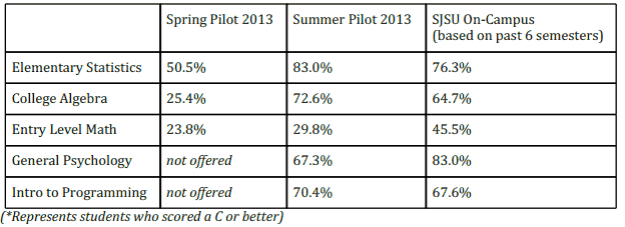
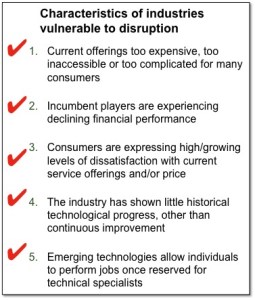
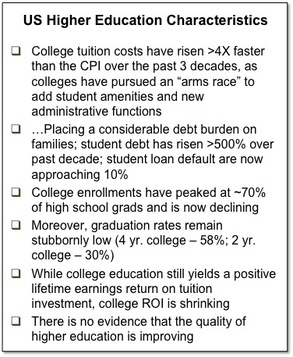
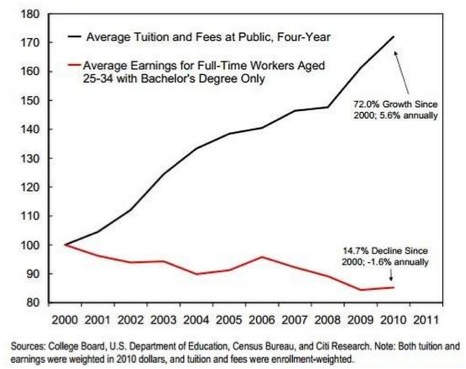
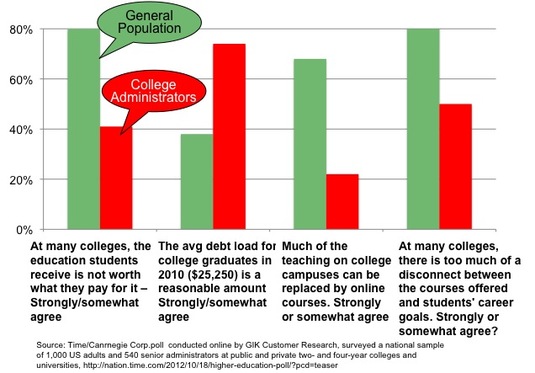
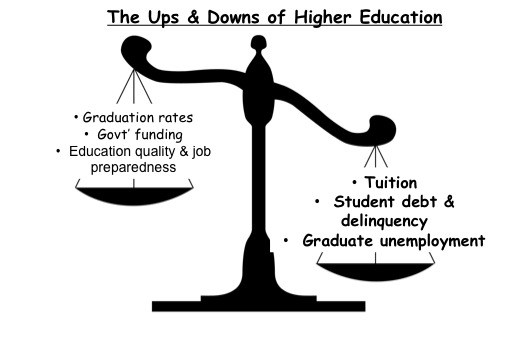


 RSS Feed
RSS Feed